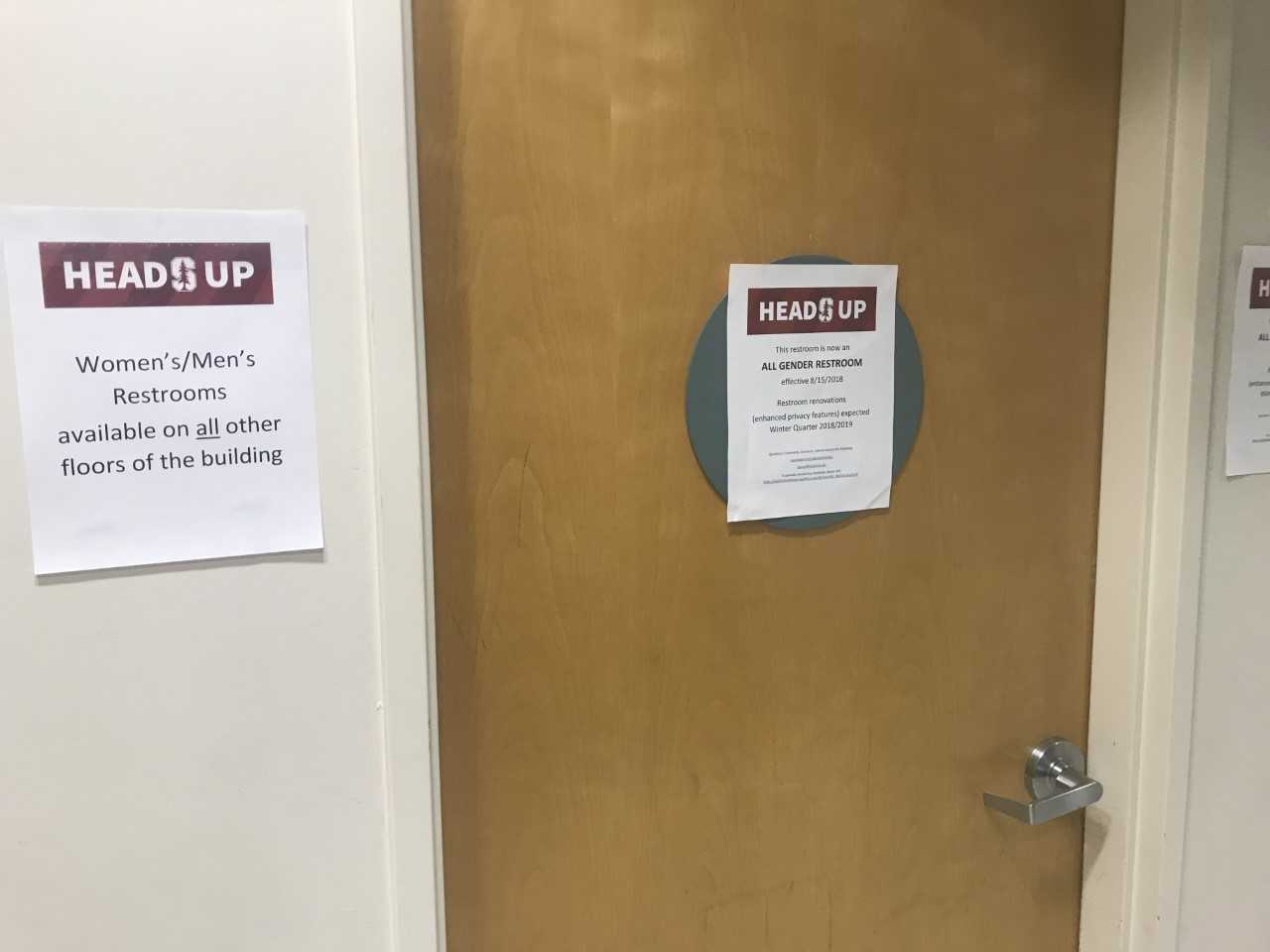On Aug. 15, the Green Earth Sciences Building introduced the University’s first multi-occupancy, all-gender restrooms in an academic or administrative building. This is a departure from the University’s prior practice of solely converting single-stall public restrooms into gender-inclusive spaces, as required by California state legislation Assembly Bill (AB) 1732 since Mar. 1, 2017.
According to Pat Carlson, School of Earth, Energy and Environmental Sciences Associate Director of Facility Operations, Green does not have single-occupancy restrooms available to convert into gender-inclusive spaces. Therefore, Stanford Earth and the Diversity and Access (D&A) Office began a joint effort to pilot multi-occupancy stalls and help establish design standards for other Stanford facilities that may lack single-occupancy spaces.
“Providing accessibility is the right thing to do,” Carlson said.
Within Green, only the first floor men’s and women’s restrooms have been transitioned to all-gender bathrooms; the restrooms on the other floors remain unchanged. Minor renovations — including enhanced partitions for privacy and improved locks to indicate if a stall is vacant — will be implemented during winter quarter.
According to Carlson, these changes stem from a desire to enhance inclusivity on the Stanford campus.
“A University-wide effort is well underway to expand restroom choice,” Carlson wrote in an email to students on a Stanford Earth mailing list. “This effort is particularly impactful for the transgender and non-binary members of our community, as well as for individuals with disabilities needing assistance.”
D&A Office Assistant Director Sheila Sanchez said the University has been cognizant of community concerns — such as religious beliefs, cultural differences and Title IX issues — regarding the transition to gender-inclusive spaces. Sanchez added that, in the long term, single-occupancy stalls should be the standard for all new construction projects on campus in order to ensure more restroom options.
“In student residences, you don’t have to go up or down one floor or across a common area in order to have a restroom of your choice,” Sanchez said. “I think that’s what we want to continue to discuss and evaluate — if that is a model that can be replicated in administrative and academic buildings.”
According to Sanchez, the next phase in increasing campus inclusivity is taking inventory of the different campus buildings that do not have single-stall restrooms to convert into all-gender spaces. These spaces will be prioritized and evaluated to see if renovations are possible or if there are nearby buildings with more restroom options.
Prior to AB 1732, the University — prompted by community feedback — had already begun transitioning areas on campus to become gender inclusive.
“[Less than a year before the legislation], we converted a single-occupancy restroom in the Main Quad, so that was the first restroom that was converted in an academic [or] administrative space,” Sanchez said. She added that, at the time, the D&A Office had already been concerned about the lack of inclusive signage and worked on removing the standard men and women pictograms and replacing them with a neutral icon.
Stanford has set a goal to have gender-inclusive, single-occupancy restrooms in all campus buildings by 2020. In August, the Arrillaga Outdoor Education and Recreation Center (AOERC) announced plans for a new all-gender changing space in its lower level. The changing area — which was formerly space dedicated to separate men’s and women’s restrooms — will be the first of its kind for Stanford Athletics, according to Assistant Athletic Director for Facilities and Operations Rebecca Carpenter.
Sanchez added that, in the future, a partnership between the D&A office and Residential Education could help shift community attitudes and perspectives about gender inclusivity on campus.
“Not only is it about the built environment but also about the training and rethinking about those spaces,” Sanchez said. “For me, it is really about not putting labels on these spaces and really embracing that they are all inclusive, and being mindful … about breaking down stigma.”
Contact Melissa Santos at melissasantos ‘at’ stanford.edu.
